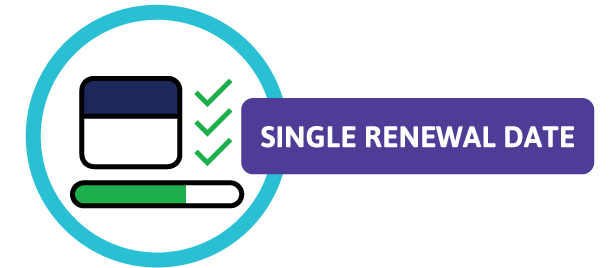Naloxone, Fentanyl and BC’s OpioId Overdose crisis
BC’s opioid crisis continues to escalate. In the first 11 months of 2016, the Province experienced 755 unintentional overdose deaths from illicit drugs in British Columbia, an average of about 2 people per day. This marks an alarming increase from the 397 deaths that occurred during the same period last year. (BC Coroners Report, Nov 2016)
“This is one of the most severe public health emergencies of our time, and while the situation is most acute in British Columbia, no jurisdiction is immune.”
– Health Minister, Terry Lake.
(Health Minister's Statement on the federal opioid summit - November 19, 2016)
Opioid Overdose Stats in BC
- Top three communities where fatal illicit drug overdoses occurred included Vancouver, Surrey, and Victoria (2007-2016).
- Ages 19-29 and 30-39 have accounted for the largest percentage of illicit drug overdose deaths in 2016.
- Males accounted for 80.7% of apparent illicit drug overdose deaths
- Rate of illicit drug overdose deaths in BC increased 45% in January to October 2016 compared to the same period in 2015.
- There were 76 deaths in January 2016 – the largest number of deaths in a single month since at least 2007.
- At the current rate, without additional steps to combat overdoses, BC could see 700 to 800 overdose deaths in 2016.

(BC Coroners Service – Illicit Drug Overdose Deaths in BC, January 1, 2007 – October 31, 2016)
Fentanyl
Of the 622 illicit-drug overdose deaths in 2016, approximately 60% were linked to fentanyl, which has been responsible for the steady increase in the number of drug-related fatalities in BC since 2012. Fentanyl is an opioid-based pain killer that is about 100 times more potent than morphine – it has medical uses and can be prescribed by a physician to help control severe pain. In recent years, the drug has frequently been seen cut into illicit substances including heroin, oxycodone and methamphetamine, which further increases the risk of an accidental overdose when taken by unknowing users.
Preliminary data for January to September 30, 2016, suggest that the proportion of illicit drug overdose deaths for which fentanyl was detected (alone or in combination with other drugs) increased from 31% in 2015 to approximately 59% in 2016.
The explosion of drug-related overdose deaths in BC (many of them linked to fentanyl) prompted Provincial Health Officer, Dr. Perry Kendall to declare a public health emergency in April 2016 which allowed medical health officers to begin to collect real-time information on overdoes to immediately identify where risks are arriving and protect those most at risk.
“These deaths have a serious impact on public health and the numbers are unusual and unexpected…”
– Dr. Perry Kendall
(Provincial Health Officer Declares Public Health Emergency – April 14, 2016)
(CKNW)
Naloxone
In order to combat the significant increase of opioid-related deaths in Canada, on March 22, 2016, Health Canada revised the Federal Prescription Drug List to make a non-prescription version of Naloxone – the drug which temporarily reverses the fatal effects of fentanyl and other opioid overdoses – more accessible to Canadians. In fact, in a meeting with federal officials on November 17th, 2016, BC Premier Christy Clark credited the rescheduling of naloxone with helping to save some 3000 lives in BC. (CBC)
In order to increase access to naloxone in BC, the College amended BC’s Drug Schedules Regulation to classify emergency use naloxone initially as a Schedule II drug in March 2016, and in September of this year changed the status of the drug again to one that is unscheduled and widely accessible. This means that emergency use naloxone can be available anywhere and purchased by anyone. As a result, BC was the first province in Canada to make non-prescription naloxone available outside of pharmacies.
Naloxone Administration Exemption for Pharmacy Professionals
In conjunction with the rescheduling of naloxone, amendments have been made to the Health Professions General Regulation adding an “exception for opioid overdose” which authorizes all health professionals to administer emergency use naloxone (outside of a hospital setting), even when administering a drug may not be within their scope of practice.
This means if a pharmacist or pharmacy technician suspects a person is suffering from an opioid overdose, they may assess and treat the person and administer emergency use naloxone by intramuscular injection or intranasally.
Access to Non-prescription Naloxone for First Nations
To improve access to this life-saving drug, pharmacists can now provide First Nations clients with naloxone and bill the drug program using their practitioner identification number.
These changes came into effect in June 2016 when Health Canada’s Non-Insured Health Benefits (NIHB) Program and BC’s First Nations Health Benefits (FNHB) added naloxone as an open benefit on the Drug Benefit List.
For more information see Health Canada’s Pharmacy Benefit Policy
Links
- College Naloxone Resources (including FAQs and Patient Handouts)
- Health Professions General Regulation(exception for administration of naloxone for overdoses
- Ministry of Health – Fighting the overdose crisis in BC
- College of Pharmacists News Release – Non-Prescription Naloxone Now Available Outside of Pharmacies (September 21, 2016
- BC Centre for Disease Control – Toward the Heart
- Health Canada’s Notice of Amendment for Naloxone
- Opioid overdose crisis, Naloxone

 Share
Share


